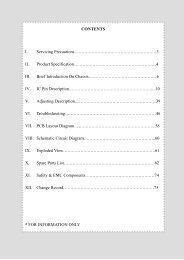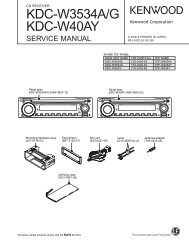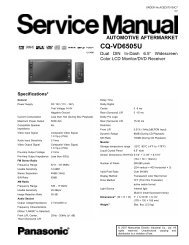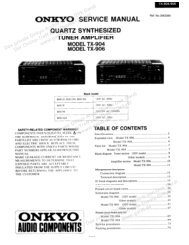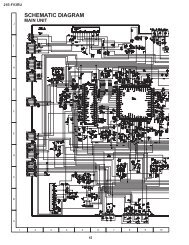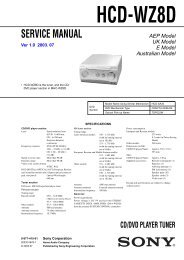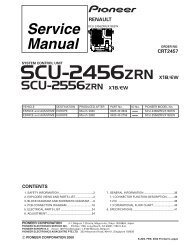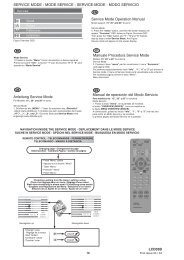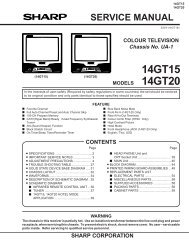Technology of Q 2500 colour TV set
Technology of Q 2500 colour TV set
Technology of Q 2500 colour TV set
You also want an ePaper? Increase the reach of your titles
YUMPU automatically turns print PDFs into web optimized ePapers that Google loves.
<strong>Technology</strong> <strong>of</strong> Q <strong>2500</strong> <strong>colour</strong> <strong>TV</strong> <strong>set</strong>4.5.3 Movement detectorIn the Y branch there is a movement detector.Here current and previous half pictures arecompared with each other. An assessment ismade <strong>of</strong> whether it is a question <strong>of</strong> full picturesin Cinema Scope format. The CCU receivesthis information via the microprocessor for theAutomatic Movie Detection (AMD). Themovement detector is also responsible for the<strong>set</strong>ting <strong>of</strong> the noise suppression K factor.In addition, using the movement from the previousto the current half picture an assessmentis made <strong>of</strong> how the movement betweenthe two half pictures could behave. In thisway, in the movement compensation stageimmediately following a new half picture canbe calculated. At the same time it must betaken into account that the two half pictures,contain the intermediate lines for the other halfpicture respectively. In this way a continuousprocess <strong>of</strong> movement over all half pictures isachieved, both for horizontal as well as verticalmovements. The DMI (Digital Moving Interpolation)function is active for both full picturepresentation and for standard video signals.The operation <strong>of</strong> this switch is largely errorfree. Nevertheless, under unfavourable conditionsnegative effects can occur, therefore theDMI function can be switched <strong>of</strong>f. Instead, theDLC (Digital Lineflicker Control) function isswitched on.4.5.4 Memory controlControl <strong>of</strong> the SAA 4993 is implemented viathe µP interface from I 2311. The µP bus isassigned to pins 26 (DA) and 27 (Cl). In additionit is here in conjunction with the MemoryController that writing to the 2nd picture memoryand reading from the two memories is determined.4.6 SAA 4979 (BESIC)The next IC in the signal path, the SAA 4974,is designed for the following functions.- Demultiplexer for luminance/chroma separation- 3.5Mbit memory for 50/100Hz conversion- Cycle rate converter from 27MHz to32MHZ− Two signal paths for the separate processing<strong>of</strong> the Y and chroma signals− Demultiplexer for the chroma signals− Band width doubling and digital CTI circuitfor improved <strong>colour</strong> transfer− Peaking circuit Y branch to increase picturesharpness− Three blank stages for dark sampling− Three 10 bit DACs for the generation <strong>of</strong>analogue R-Y-, B-Y- and Y-signals,I²C bus interface and timing control for thecontrol <strong>of</strong> the individual processes throughthe microprocessor.− Microprocessor bus for the control <strong>of</strong> theSAA 4993.− Control <strong>of</strong> write and read processes in thehalf picture memory, as well as the totaldigital 100 Hz video signal processing.− Generation <strong>of</strong> a 32 MHz cycle.− Generation <strong>of</strong> H and V synchronous pulsesfor the TDA9332 video/deflection processor.Document Q <strong>2500</strong> 99 © Loewe ProCollege



